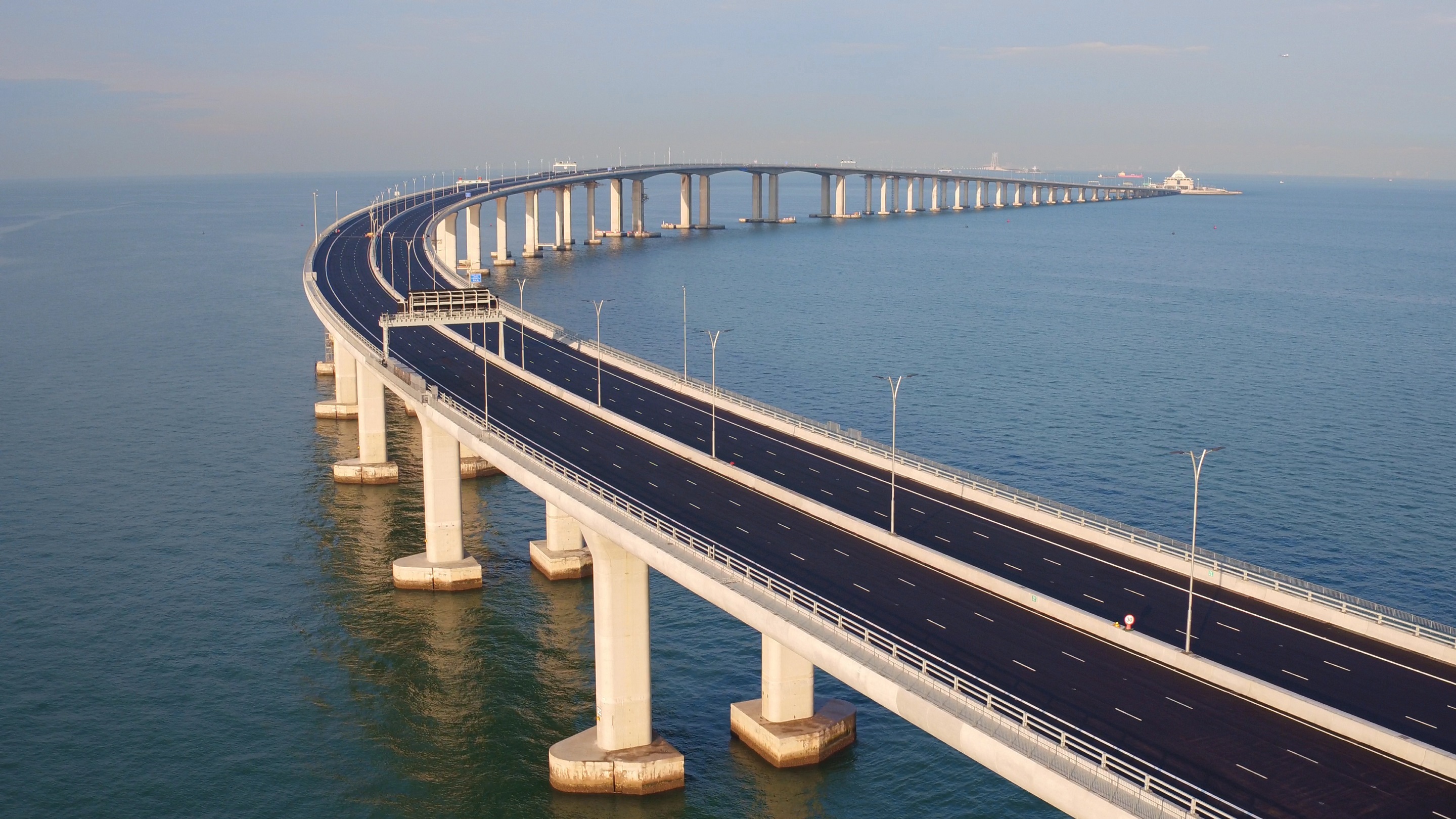By Ron Bernthal
With almost two-million residents, Zhuhai is considered a “small” Chinese city, but it is certainly not an undiscovered city. Located at the southern tip of the Pearl River Delta of Guangdong Province, Zhuhai is one of the seven special economic zones in China.
The city faces Hong Kong across the sea to the east, and is located adjacent to Macau on its southern border, and the city of Zhongshan to its north. The completion of the 34-mile long Hong Kong-Zhuhai-Macao Bridge, in 2018, makes Zhuhai the only city on the Chinese mainland that is conntected to both Hong Kong and Macau by land.
The bridge/tunnel system consists of a series of three cable-stayed bridges, an undersea tunnel, and four artificial islands in the Pearl River Delta. It is both the longest sea crossing and the longest open-sea fixed link in the world, and took nine years to complete at a cost of $18 billion. Since opening, the bridge/tunnel has consolidated Hong Kong’s position as a hub for multi-destination business and leisure travel within the Greater Hong Kong Bay Area, which includes nine cities in Guangdong Province and two Special Administrative Regions, and has shortened the trip to/from Hong Kong International Airport to Zhuhai from four hours to just 45 minutes.
Residents and visitors to Zhuhai enjoy the city’s golf resorts, parks, beaches and the coastal islands nearby. Located near the frenetic business and cultural environment of Hong Kong, and the 41 casinos of Macau, the quiet city of Zhuhai has been known as China’s “Most Livable City” (named by the Chinese Academy of Social Sciences) for quite some time, although I am sure that residents of Shanghai, Beijing, Jiuzhaigou or many of the thousands of other Chinese cities may have a different opinion.
Zhuhai has been playing a pivotal role in the region’s growth as a tech hub, especially since the completion of the land link. In an effort to transform the city’s waterfront and create a blueprint for future development, Skidmore, Owings & Merrill (SOM) was selected from a shortlist of 10 global design firms to create Jiuzhou Bay—a new 5.6 million square-foot mixed-use neighborhood that will consist of offices, residences, retail, and infrastructure.

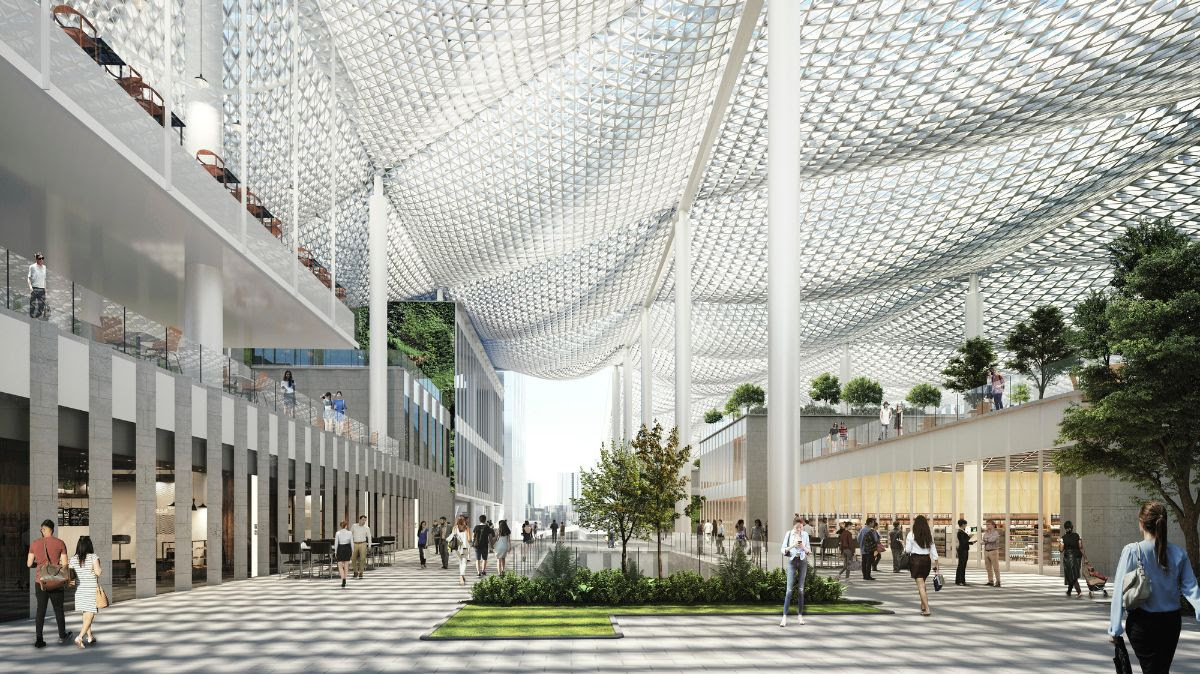
“The forms of the canopies are inspired by the local legend of the Fisher Girl and reflect the fishing nets commonly seen on the coastline throughout the region,” said Sean Ragasa, design director at Skidmore, Owings & Merrill LLP (SOM). “We wanted our design to resonate with the culture and history of Zhuhai, and to evoke a story that’s familiar to everyone who lives there.”
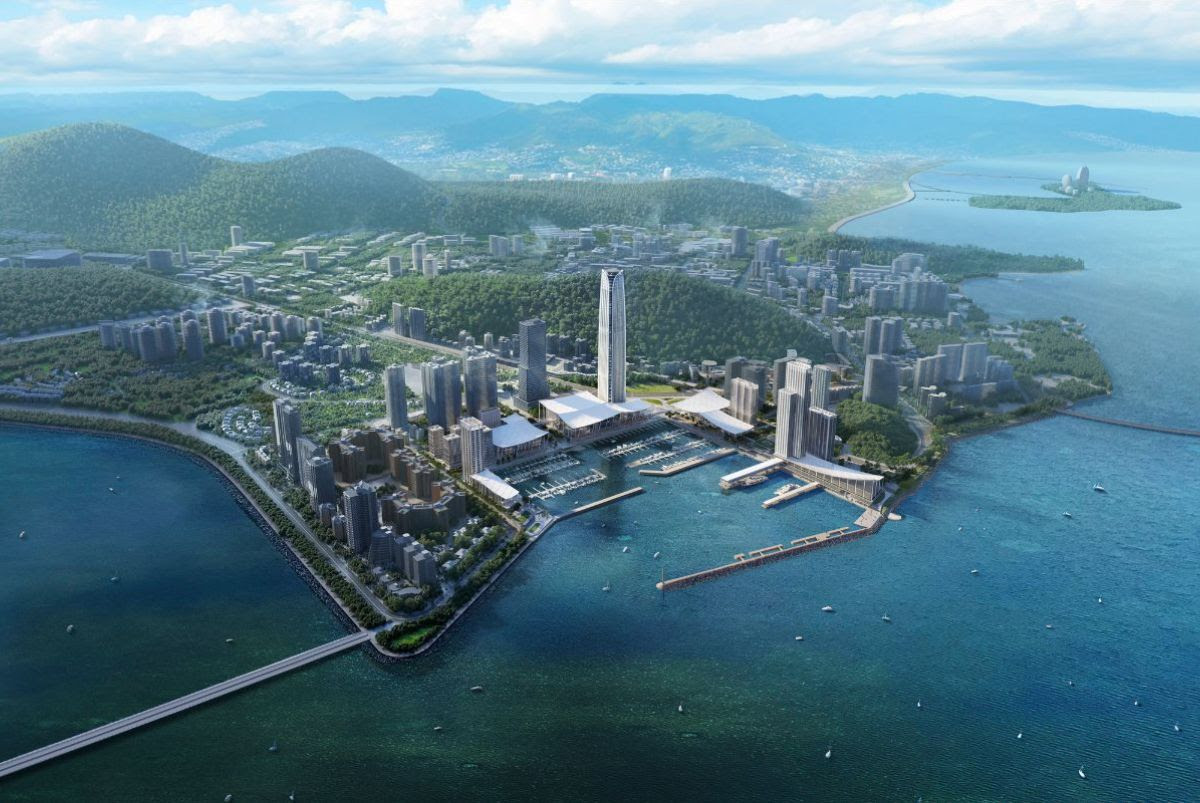
Complementing the site’s maritime heritage is a 1,045-foot-tall tower that rises at the heart of the neighborhood, creating a recognizable structure with a design inspired by the form of a lighthouse Fresnel lens. The tower comprises 35 floors of office space topped by a 20-story Ritz-Carlton Hotel complete with a skybar and observation deck. The tower is diagonally bisected by an axis that appears to peel open the facade, revealing a vertical atrium that offers visitors breathtaking views of the bay.

The new neighborhood is designed to utilize Zhuhai’s most abundant natural resources—the sea and sun—to reduce natural gas consumption, conserve water, and create a comfortable environment for residents, office workers, shoppers, and nightlife seekers, helping to activate the site both day and night. The canopies also increase interior comfort and building efficiency by filtering daylight, harvesting energy via photovoltaic panels, and capturing rainwater.
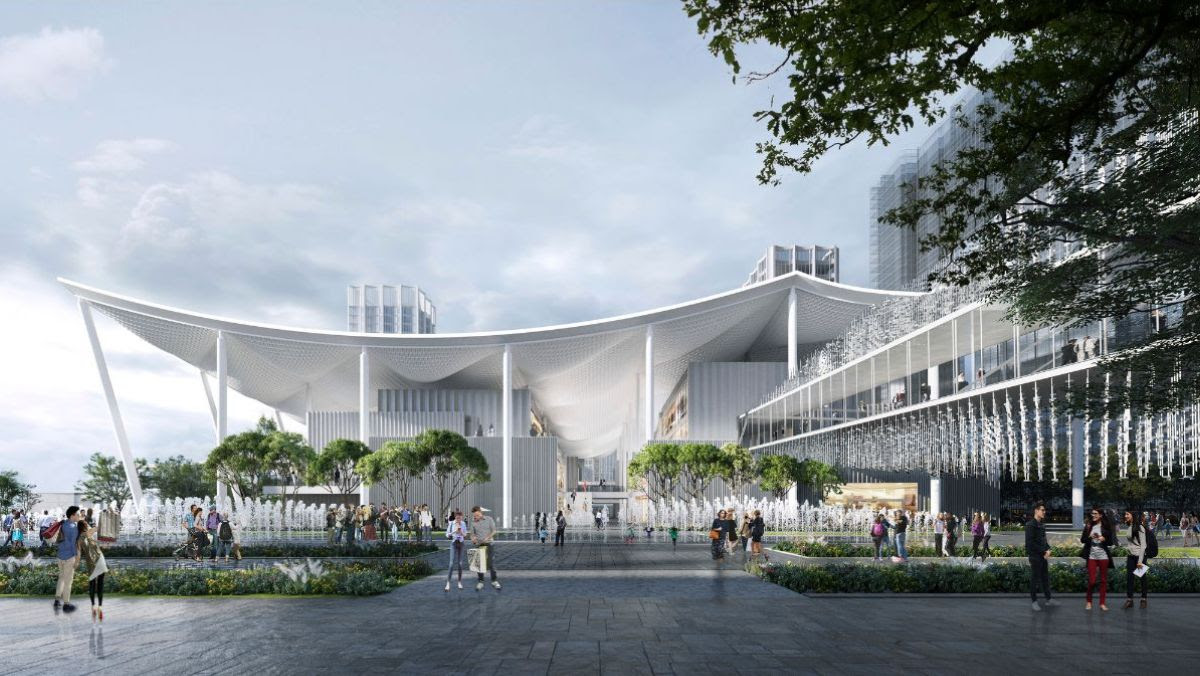
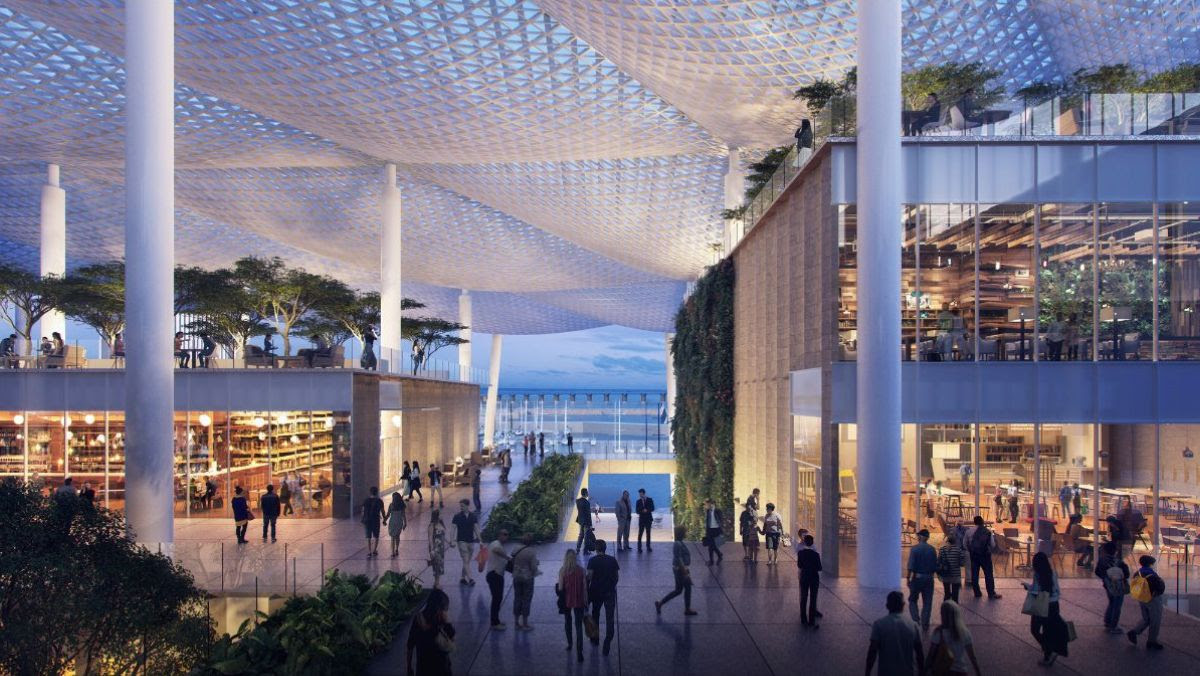
SOM has designed a number of mixed-use projects globally, including the Guoco Tower in Singapore, One World Trade CDenter in New York City, and Burj Khalifa in Dubai.

